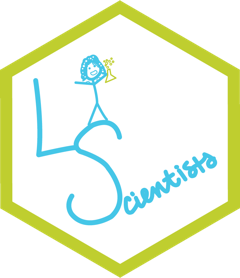Cognitive Networks and Implicit Bias
Cover photo by Elisa from Pixabay
By Megan Sumeracki
As a cognitive psychology professor, I teach about cognitive networks and how we process, organize, and respond to the world around us. We are able to quickly and flexibly process and categorize items around us, understanding what they are and what they are for, even if we have never seen that specific object before.
For example, imagine walking into a brand-new classroom. You have never been in this specific classroom before, so you have never seen the specific chairs or desks in the classroom before. Yet, you still can identify chairs as chairs, and desks as desks. This is true when the style of furniture is the same—think different classrooms that were all designed within a building to “match”. But importantly, it is also true even if the style of chair and desk is new to you. The furniture may be a new brand or a just a different version, model, or color, but you can still recognize, quickly and flexibly, where you are supposed to sit and where you are supposed to put your notebook and pencil.
Images above by WOKANDAPIX, Yinan Chen, Taken, kieurope, M S, and GSLCMedia, from Pixabay
We are able to categorize, and to generalize. Every time you see a chair that you have never seen before, you don’t have to learn that it is a chair and can be used for sitting. This is because you have learned some general rules for chairs, as well as a prototype for a chair. You have experience with a lot of different types of chairs, so you can group similar items together and flexibly apply the category, in what feels like an automatic way seemingly without even thinking. (Of course, your cognitive system is working even though you consciously don’t realize it!)
We need to be able to do this with what we perceive in the world around us. This is an extremely helpful feature of our cognitive systems. The problem is, we don’t just do this with chairs and desks, or other physical objects. We also do it with people. This may not have been a problem when we lived in small tribes and rarely interacted with people outside of our in group. But now, it leads to what we call implicit bias.
Our experiences, what we see and hear ourselves, what we read, what we are told, are all integrated into our cognitive networks. Automatically, and seemingly without even thinking, we create general rules and prototypes and use those to quickly categorize people. There are countless examples of this, but I find it easier to use a personal example. Imagine, in your mind, what a doctor looks like. What is the first image that pops into your head? For many, this will be a male wearing a white coat. Now, imagine a cheerleader. Was she blonde? Was she the same person that was wearing the white coat when you imagined a doctor?
My sister was blonde when she was little, and was a cheerleader. What is the typical stereotype about blonde cheerleaders? Not very smart, very into their looks, the kind of kid who ditches school, and so on. However, my sister is extremely smart, took school extremely seriously, and ultimately went to medical school and became an OBGYN. I wear glasses, and people call me “Doctor Sumeracki” at my job. But that is because I have a PhD, not an MD. My sister is smarter than me, and you definitely want her in the room if there is a medical emergency and not me.
By the way, because humans built AI language models, and the models are trained on the language we produce, they have bias built into them too. I asked Google Gemini to generate a picture of a doctor. I didn’t give it any other characteristics. Below is the image I got:
Google Gemini image generated using the prompt “Generate a picture of a doctor” (June 25, 2025)
I then asked Google Gemini to generate a picture of a cheerleader:
Google Gemini image generated using the prompt “Generate a picture of a cheerleader” (June 25, 2025)
See what I mean?
Just for fun, I then asked for a psychologist, a nurse, a professor, two teacher images, and a smart person (it gave me two images without asking for some reason). Notice anything about these people? Almost all have light skin, and many follow typical stereotypes. I could have kept going, asking it to generate more examples, and perhaps more diversity would have presented itself. Still though, if it was truly presenting diverse groups of people in various jobs, we would not see these seven images as the first ones generated. Of course, we can use more specific prompts to get more specific, and/or varied exemplars from AI. However, without specifying, unsurprisingly it seems AI tends to go with the stereotype.
Google Gemini image generated using the prompt “Generate a picture of ____” (June 25, 2025)
Often when I teach about this, the initial reaction is “but I’m not racist!” or “but I’m not sexist!” or whatever “ism” comes up. This is a defensiveness reaction, and it is very normal. You probably aren’t racist, or sexist, or whatever “ist” that has come up. While explicit bias is real, if you say you aren’t I’m very inclined to believe you. I don’t think I’m racist, or sexist, either. But I know I have implicit (unconscious, automatic) bias, because we all do. These biases are baked into the world around us, and so they are baked into our cognitive networks. When we come across these stereotypes, we can consciously know the stereotype isn’t true, or isn’t always true. For example, I know that not all cheerleaders are unintelligent. I know that not all doctors are men. But I’m still seeing these examples perpetuated in the media we all consume, including news stories and fiction (movies, TV shows, books, etc.). When we see these concepts together, like cheerleader and unintelligent or any other stereotypical pairing, or hear bias in the way we label people, such as referring to female nurses as nurses, but male nurses as “male nurses,” it strengthens these associations within our cognitive network. Whether we want to or not, we learn that these things “go together” and consciously, automatically, they activate together in the future.
There’s no sense in trying to deny that implicit bias exists in all of us. And it isn’t going to go away! The best way to combat it is to acknowledge it and make the effort to slow down and course correct when these biases come up. Listen if someone calls you out. Give yourself grace, because it is how our cognitive systems are designed to work, after all. And make a conscious effort to consume media that challenges typical stereotypes. Exposure to diversity matters.











